I Want One Someday
I want one someday

FREQUENTLY ASKED QUESTIONS ABOUT COB CONSTRUCTION
Does cob work in humid climates?
Cob is a form of earthen building developed in the British Isles, a very wet area famous for beautiful mists and vicious storms. Yet the native cob buildings in these places have withstood centuries of harsh weather and still remain in use today. When I built a cob studio Pensacola, Florida in 2002 many people were skeptical that it would survive our 98% humidity and frequent hurricanes. However, the building has had no problems despite soaking rains throughout the building process and a hurricane that destroyed many of the surrounding wooden buildings. Even in humid climates cob does not rot, grow mold, get eaten by termites, or melt on the rain.
Cob is very porous and can absorb a tremendous amount of water without softening. In fact, unless it is completely submerged, cob will never just “melt”. It will however erode over time if it is exposed to direct rain. The solution to protecting cob from moisture is “a good hat and boots”. In other words, a cob house needs a good roof with wide eves and the bottom of a cob wall must sit on a non-absorbent stem wall so that it cannot wick moisture up from the ground or be splashed by water coming off of the roof. Cob walls are very thick, often two feet or more, so even the heaviest rain will never soak through more than the outer layers of plaster. Even if your walls get soaked with rain occasionally (like in a really big storm) they will be fine as long as they can dry back out. For this reason it is very import to never plaster a cob wall with a non-breathable coating like cement stucco.
Why can’t I just seal my walls with cement stucco?
Don’t make the mistake of trying to protect your cob walls by sealing them from moisture. Even the best stucco job will inevitably develop tiny cracks and allow moisture into the wall, but it will not allow the moisture to evaporate back out. Eventually water will condense on the inside of the stucco and build up inside until the wall is saturated. Many cob buildings in Europe that had stood for hundreds of years have suffered partial collapses in recent years because of new cement plasters.
Is it dirty inside?
No. Once the inside of an earthen building is plastered there is no more dust or dirt than you would find in any other building. In fact, the plasters used in cob buildings are often the same ones used on the plaster and lath walls of older wooden homes. If you want smooth white walls you can still have them with cob.
Is it cold and wet inside?
No. Cob homes are exceptionally dry and warm in winter/cool in summer. The breathable clay walls seem to pull some of the moisture out of humid air keeping the inside cooler in hot humid weather. In winter cob absorbs the energy of the sun during the day and radiates it back into the building at night, keeping the inside warm and cozy.
Is it well insulated?
Technically speaking, no. Cob is very cool in summer and warm in winter and with good design you may never need to heat or cool a cob building. If you do heat and cool your building it will hold that temperature for a long time. But, cob does not get these thermal properties from insulation. Instead cob works because of its thermal mass. Thick heavy earthen walls absorb the heat of the day and store it like a battery, keeping the inside of the building cool and comfortable. Then, when the weather is cooler they radiate that heat back out keeping the building warm.
Can I paint my cob walls?
Yes! In addition to colored plasters, you can paint an earthen wall with an almost endless variety of colors from clay and mineral pigments. There are many excellent recipes for beautiful natural paints and there are few stores and mail order businesses that sell ready made natural paints. In fact, natural paints are beginning to come back into use in conventional homes as well. Even if you are painting a conventional wall you may want to consider natural paints because latex and oil based paints off-gas very toxic chemicals, sometimes for years.
You should never paint your cob walls with latex or oil based paint for the same reason that you would not plaster with cement; it impairs breathability. You can find sources for Natural paints and recipes here (resources).
Will termites eat the straw out of my cob?
No. There is nothing in cob that the termites are interested in.
How fast can I build with cob?
How fast you finish your house depends on how skilled you are, how hard you work, how many people help, how big and elaborate your house is and, to some extent how much money you have. In warm breezy weather you can build 2 or 2 ½ feet of height on your wall each day. That may not sound like much, but if you build your walls 8ft high then you could theoretically have them done in four days. Cob is actually faster than most other building methods (including traditional stick framing and straw bale) because once the walls are built they are done. In other types of building there are multiple layers. For example, even if a framing crew framed your entire house in four days or less they would still have to add insulation, vapor barriers, exterior sheathing, drywall and paint. This process would probably take you the next thirty years to pay for. With cob, you may spend an entire summer building your walls yourself plastering them and putting a roof on them, but it could cost you as little as $5,000 so you won’t be working to pay the mortgage for the rest of your life.
How much does a cob house cost?
Ianto Evans has been quoted with the best answer to this question that I have ever heard; “How long is a piece of string?” Your cob house can cost as much or as little as you have to spend on it. The basic materials, clay, sand and straw are very cheap and you may even be able to get most of them on your own land. Huge amounts of excellent, often brand new, building materials are thrown into dumpsters every day. I have found porcelain sinks, entire boxes of marble tile, endless amounts of high quality lumber, and every other material you can imagine for free. Because cob is so malleable, it is very easy to use odd salvaged windows, doors, and wood, so if you take the time to scavenge you may not have to buy much at all. Some cob homes have been built for as little as $500 and many for as little as $5,000.
How big can I make a cob house?
Just like with any other house, you can make it as big as you can afford (in money or in time.) You probably won’t need as much square footage as you think you will though, because cob homes are usually built in rounded shapes which offer far more useable space than square buildings. Since cob home owners generally do most of the work themselves, they usually choose to keep their houses to a modest size. One of the great things about cob is that if you decide later that you need more room you can just make an addition or build another cottage next door for the kids.
Do cob houses have modern conveniences?
Cob homes usually include all of the same plumbing and electrical wiring as a conventional home. They can also have central heat and air conditioning although the need for these is far less than in conventional house.
Is it legal to build house out of cob? Can I get a permit?
It is not illegal to build with cob anywhere in the US, but neither is it specified in the building code. In order to get a permit to build with cob, many people have first been required to employ an engineer to help with their building plans. In nearly all cases a building department will approve plans once they are stamped by a “licensed design professional.” In addition, the building code does include specifications for adobe construction and many building officials have simply looked upon cob as a form of adobe and approved construction according to that code even without the help of an engineer.
In some cases you may not even need a permit. For example, there are permit exemptions in most places for buildings under a certain size, agricultural buildings, and in some rural areas no building permits are required at all.
Should I try to build my own cob house?
For many people building their own house is a wonderful experience. The materials for building a cob house are very inexpensive and the skills for assembling them are easily acquired. For that reason cob can offer you the opportunity to build a unique home for very little money if you are willing to do the work yourself. Many of our workshops are tailored to prepare you to build your own efficient, healthy and mortgage free home. We also provide a range of services to help owner builders along the path to success in building their own homes. For some people it may be better to hire a great deal of help and to hire a professional to oversee the construction. If you can afford to pay cash for the construction of a house and do not relish physical labor, or if you want a large and complex design, then hiring a professional may be the best path for you.
Are there professionals to help with cob building?
Yes! There are very few natural builders who act as general contractors. However there are a number of natural builders who are available to assemble and lead paid building crews, train your crew, act as consultants, project managers, or otherwise help you through the process. You can see details about our range of services here.
Can I host a workshop to help build my cob house?
Yes! Here are some of the things you probably want to know about hosting:
We much prefer that you take a workshop before you host one. There are some exceptions, but usually taking a workshop is the best preparation for being a host.
Workshops do not generally complete a building unless it is tiny. They do get a great jump start, involve the community, and are a lot of fun. They also afford you a great deal of professional help as part of the workshop package.
Hosting a workshop seldom actually saves you much money over the cost of hiring help. A workshop is not a way to a house built for free. However, there are many less quantifiable benefits to hosting a workshop.
http://www.barefootbuilder.com/faq.html
More Posts from Thegreenkeeper and Others
These are cool, wouldn't mind owning a handful.
I don't have a need for this, but I WANT THIS...



Steampunk Hourglass by Stanislav Remez
I felt a lot of nostalgia watching these, one of my favorites. Beautifully rendered and animated inked drawings.





Alice in Wonderland (1951) dir. Hamilton Luske, Wilfred Jackson and Clyde Geronimi
I would love to have a window like this in my house.
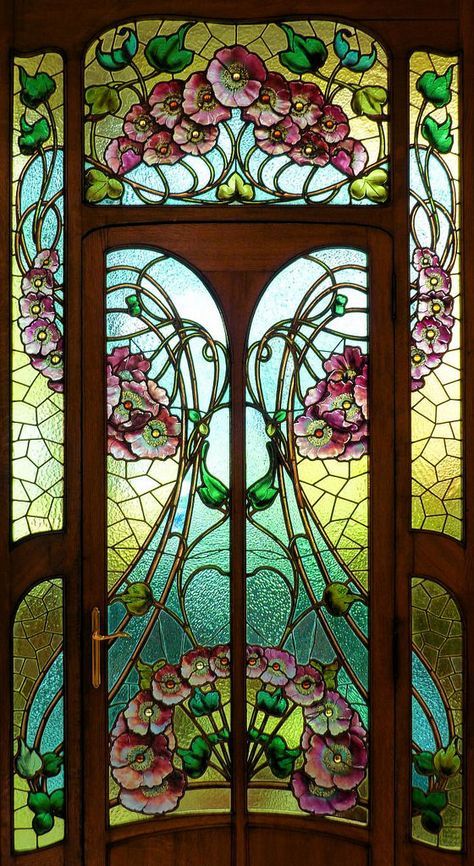
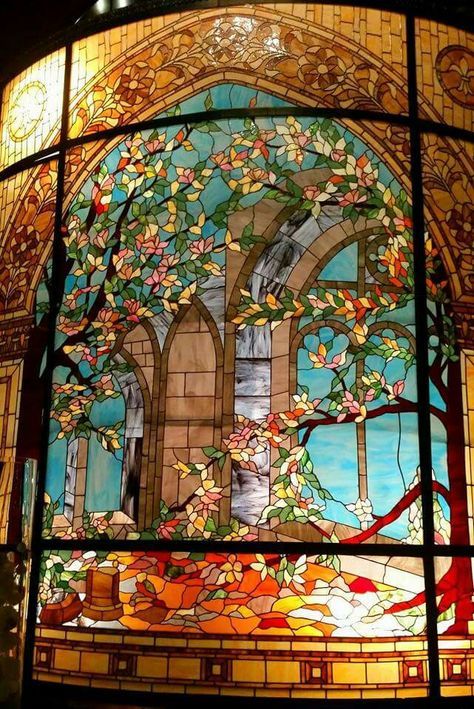
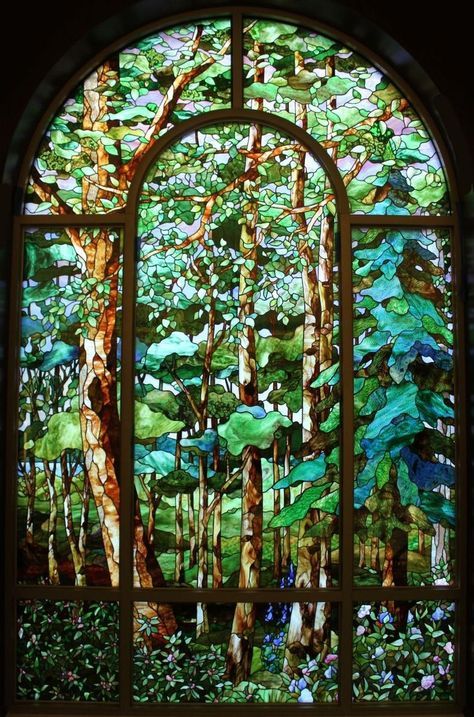
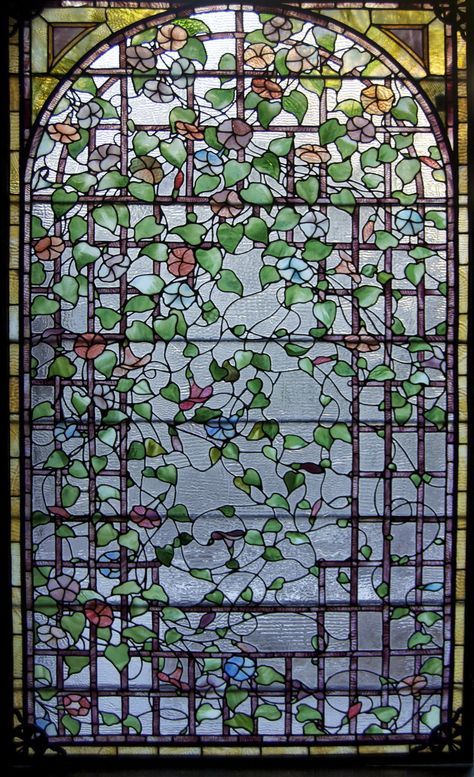
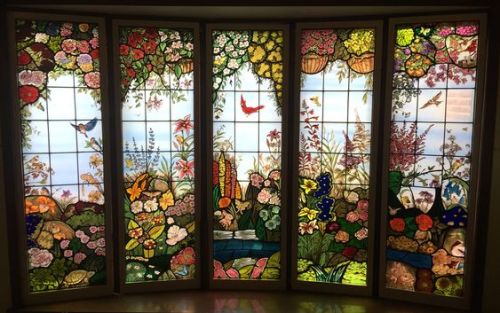
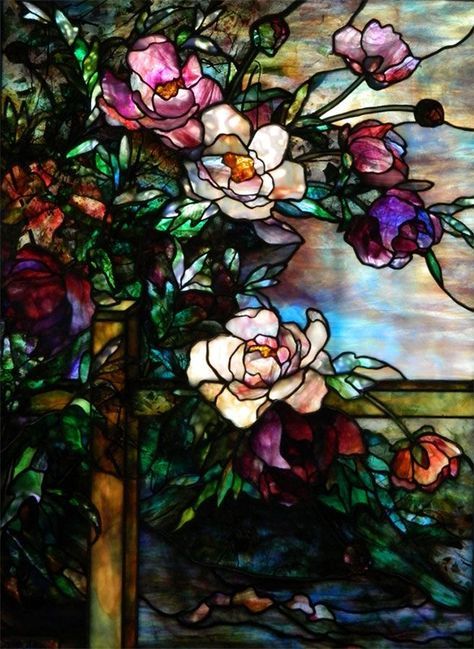
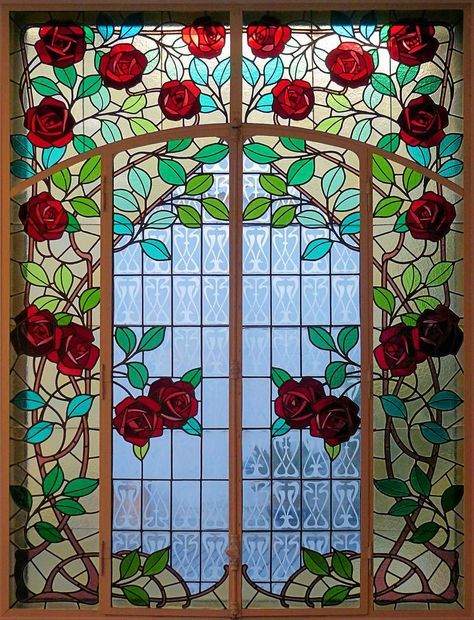
Magical stained glass
Yes, we have seen them. And we still think they are majestic, beautiful, quirky, and will most definitely tear you eyeballs out if you give them a reason to. 😁
everyone thinks ravens are these majestic, serious birds and…have you ever seen a raven






x
A beautiful saturation



Into the World of Vincent van Gogh
The exhibition in the Atelier des Lumières is unlike many others, as it aims to immerse art lovers by completely surrounding them with the artworks by projecting the paintings on the surface of the walls, flooring, and everything inside the building.
One particular exhibit features the famous Vincent van Gogh (1853-1890), a perfect candidate for this type of experience. The walls and flooring are illuminated with his masterpieces and visitors seemingly become part of them, standing against the rich colours and moving pieces of the works. The exhibitions aims to explore both the life and works of Vincent van Gogh, categorizing and highlighting parts of his life. The visuals are accompanied by both commentaries and music pieces which provide context to it all.
Van Gogh, Starry NightCreated by Gianfranco Iannuzzi - Renato Gatto - Massimiliano Siccardi - with the musical collaboration of Luca Longobardi.
Facebook l Instagram

The Nursery Rhyme Book by Andrew Lang, illustrated by Debra McFarlane . The weather was actually nice enough to take outdoor pictures!! Do you guys take pictures outside? . . . #thenurseryrhymebook #andrewlang #foliosociety #debramcfarlane #bookcover #bookcoverdesign #daisy #daisies #booksandflowers #outdoors #nature #flowers #floral #nurseryrhymes #kidlit #childrensbooks #love #bookstagram #instabooks #book #bookphotography #bibliophile #reading #booklover #bookphoto
Love celtic/Gaelic folklore
Faerie List
Alvens: These are Water faeries who float around on bubbles and hate fish. During a full moon, they come on land to dance and play. They are not particularly friendly.
Amadan Dubh: This is a particularly dangerous type of faery that is greatly feared among the Gaels. They are known as the “fairy fools,” and the bringers of madness and oblivion. They play faery enchantments on their reed pipes on hilly slopes and precipices after sunset.
Banshee: The name “banshee” means a woman of the faery. It corresponds to the “Fear Sidhe” or faery man. The wild banshee wanders through the woods and over the moors at dusk, and some- times lures travelers to their death. Banshee can also travel at will to great distances. Appearing in tattered gray clothes, they are basically a sociable faeries who have become solitary through sadness and grief. They are the honor- able ancestral faery women of the old clans of Ireland, who are heard, but rarely seen. They wail a blood-curdling lament just before mis- fortune, illness, or death occurs in their ancestral families. Their wail can kill or instantly age mortals who hear it. Banshee also avenge the death of their descendants. They generally appear either as beautiful maidens or gruesome crones. Salt water and silver can harm them.
Bendith Y Mamau: They have the ill disposition and ugly appearance of goblins, but the glamour of the faeries. Living in underground caverns, they don’t care very much for mortals and they have been know to steal cattle and children, to kill farm animals, and to break important tools.
Billy Blin: A household familiar who is popularized in English and Scottish songs.
Boggart: They are known for breaking things and making trouble, but seldom do serious harm. Most old homes have a boggart. The supernatural boggart is sly, annoying, mischievous, and a prankster. They pull the covers from sleeping mortals, rap or pound on the door at odd times, or rearrange the furniture at night when you are sleeping.
Brownie: They are from 1 to 2 ft. tall and are scattered throughout the highlands and lowlands of Scotland as well as the northern counties of England. They have brown, wizened faces and hair growing all over their body, so they don’t need to wear clothes (although sometimes they are seen wearing brown cloaks with hoods). As household faeries, they do unfinished jobs such as mowing, threshing, caring for the laying hens, and tending the sheep and cattle. They bring good luck to a family, providing that the family treats the brownie well. Brownies also love animals and will take care of the household pets. They adore gifts of food and drink such as milk and honey cakes, but abhor gifts and wages. Urisks are the Scottish version of brownies.
Buccas: Residing in Cornwall, they are magickal beings that inhabit mines. Also called tinmine demons, they are the wind goblins that foretell shipwrecks.
Bwca: This is a sort of Welsh version of a brownie, but a more particular one. They can be great help around the house, but if offended they can become harmful, throwing things around the house, spoiling the milk, and ruining the beer.
Callicantzaroi: Naked, they ride about on chickens. They live in troops and are zealous in their celebrations of Yule.
Clim: A mischievous goblin that resides in chimneys and peeks out at children, scolding them when they are bad.
Clurichaun: Residing in southwest Ireland, they are renowned drunkards who both guard and raid wine cellars. The Clurichaun sing in Gaelic and have beautiful, magickal voices.
Coomlaen: These “elven steeds” appear as tall, thin, white or silvery horses who live in the forest and are always in the company of elves. As shapeshifters, the coomlaen can take the shape of their de- sires, but must return to the shape of a horse once during each day for at least six hours. They are fiercely devoted to one rider at a time and the bond lasts for the lifetime of the rider. The two communicate telepathically. Because the Coomlaen defends its rider, in order to befriend a coomlaen you must first befriend its rider. Coomlaens adore gifts of apples and honeysuckle. Iron is harmful to the coomlaen.
Cooshie: Also known as the “elfin hound,” they live in the forest and appear as large, silver-furred wolves that move quickly with the grace of a large cat. The cooshie stay with their elfin masters, and have heightened senses, including knowing when there is any magickal, spiritual, or physical presence in their territory. Like elves and coomlaens, they have an aversion to iron. Cooshies can heal sick or injured travelers and calm troubled minds and hearts.
Corrigans: From Brittany and Cornwall, they live in the woods, near streams. Corrigans are winged faeries who like to play pranks, such as taking human babies and replacing them with changelings.
Daoine Sidhe: The immortal polytheistic group of goddesses and gods of Pagan Ireland who merged with the land, these are the cream of the crop of faeries that form a faery nation. They appear in human form, dressed in green, and are called the peaceful faeries. They preside over the faery kingdom, play sweet music, dance, ride milk-white faery horses, and are generally accompanied by their faery hounds.
Dryad: They are happy, friendly, and playful wood nymphs who live in and take care of the trees. They are born of the same seed as the place they live. Dryads are the color of tree bark or leaves and their dark green hair is extremely long and flows about them. They can disappear by stepping into a tree, as if stepping into a dimensional door. Sometimes their skin is dappled like a tree trunk. Dryads are usually very charm- ing, sing beautifully, and particularly like willow and oak trees. Damaging a dryad’s tree harms the dryad as well, but the dryad can defend its tree by creating storms and lightning.
Dwarfs: Both male and female, dwarfs are usually from 3 to 5 ft. tall, with broad shoulders, large muscles, long arms, stumpy legs, and lots of facial hair. They are quick tempered, loyal, and immune to physical damage. Working with Earth, Fire, and stone, they are found underground under moun- tains and hills where they mine metals and gems, especially copper. Their craftsmanship is unmatched in the mortal world. They adore gifts of both precious metals and gems.
Eash Uisge: They are the Highland water horses known for being fierce and dangerous. They have the ability to shift into the shape of young, hand- some men.
Elves: According to Norse mythology, elves and dwarves are created in the time before humans from the body of Ymir, the giant. Inhabiting one of the upper worlds, and often found in Natural settings such as woodlands and forests, elves are somewhere between mortal and divine. Originally between 5 and 7 ft. tall, they were thin, strong, flexible, and quick. Their hair was usually red, blond, or light brown, and they had cat-like ears. Their cat-like eyes are green, blue, silver, or gold with slitted pupils. Through time, the elves became Elemental spirits of the land, sea, and forest, who are sometimes por- trayed as small, good-natured creatures with brown skin and delicate features. Iron does not kill elves, but it can injure them. They adore gifts of quartz crystal, pearl, moonstone, and silver. In the Western world, Santa Claus and his helpers are elves.
Ferrishyn: The Manx name for the faeries, also known as the “sleigh beggey.”
Fir Dearg: Also known as the “fear darrig” or the “red men,” they are a mischievous, rare breed of faery, who dress in red and have red hair. Their only interest seems to revolve around playing practical jokes on humans.
Ganconer (Gean-canogh): Also known as a love faery, the ganconer is a leprechaun-type faery who appears as an incredibly handsome young male. Called the “lover-talker,” he spends most of his time seducing milkmaids and shepherdesses. Appearing in lonely valleys and fields, they are known for playing beautiful songs on their pipes, but their fate is ultimately to be alone.
Gnomes: They are elderly dwarf people who stand from 1 to 2 ft. tall, and like dwarfs, live under- ground except for the few times when they come up to roam in the deep forest. Male gnomes grow long beards. Gnomes live under old oak trees in heavily forested areas, and like gifts of beautiful stones.
Gray Elves: Not choosing to associate with any other magickal beings, they live in isolated meadow- land. Gray elves have either silver hair and amber eyes, or pale, golden hair and violet eyes. They are very intelligent and extremely rare.
Gwartheg Y Llyn: The Welsh name for faery cattle, said to be usually milk-white in color. A farmer who gained the favor of this magickal cow was said to be richly rewarded, but the farmer who tried to lift a hand to hurt the animal would find misfortune would come to the farmer.
Gwradedd Annwn: The Welsh name for the “lake maidens,” they are beautiful and desirable, but are not like sirens and nixies. They are known for marry- ing mortals much like the Silkee or “seal maidens.”
Hobgoblins: They are the English cousins to the Scottish brownie and Welsh bwca. A house faery, a hobgoblin’s favorite place is behind the kitchen fire, once known as a “hob.” Once settled, they rarely leave the house, and when feeling ne- glected, they are known to hide keys in the most unlikely places. They are vulnerable to iron and gold. In folklore and literature, both Robin Goodfellow and Puck are hobgoblins.
Knockers: In Cornwall, they are generally helpful mine sprites that are particularly attracted to rich veins of ore. Miners of old were said to follow the sound of the knockers’ tools pounding the rocks to find a strike. Knockers are also known to warn against cave-ins and floods, and as such, the miners always leave them gifts of food and drink. In Wales, knockers are known as “coblynau.”
Kobold: The German name for the “little people,” originally they were tree sprites who were captured and brought home in wooden boxes. The per- son who captured the kobold could open up the box and the kobold would do things for her or him. But if anyone else opened the box, the kobold would take revenge for being confined. They formed the basis for the original jack-in- the-box for children. They are old men the size of small children who wear pointed hoods or caps and green clothing. Loud noises and strong winds scare them. For gifts of food and milk left out at night, they will do any little job around the house and barn, such as washing the dishes, preparing meals, sweeping the floor, making the fire, or tending the farm animals. Kobolds also have the ability to cast binding spells and will go to great efforts to protect the members of the household. If mistreated, they can become truly nasty.
Leanhaun (Leanan) Sidhe: They are the faery mistresses or sweethearts of Scotland and Ireland. They crave love, and try to gain power over their lovers, treating them like slaves and draining all the life out of them before moving on to new lovers. Said to be an inspiration to poets and musicians, these magickal faeries act as sort of muses, giving the artist’s work an otherworldly quality.
Leprechauns: They usually manage to trick their way out of surrendering their gold. Only a select few get away with a leprechaun’s riches. Solitary faeries of Ireland, witty, fascinated with gold, they can pass by as a swirl of dust, knocking off your hat. They are generally 2 to 3 ft. tall, with wizened faces, bright eyes, and red noses. They dress mainly in greens and browns, and are known for their excellent shoe-making skills.
Lorilei: A solitary faery, who is beautiful and bewitching, she is known for lounging on rocky heights while singing a song of enchantment.
Lunantishee: They guard the blackthorn bushes particularly on Samhain and Beltane. If you cut a stick from the bush on either one of those days, you will suffer misfortune.
Mermaids/Merrows: They live in the airy palaces be- neath the waves. They wear red-feathered caps to swim from their underwater world to ours. If a mortal steals the cap, the merrow can’t get back home. The females are beautiful, the males are ugly with green faces and red pig noses. Both have fish tails and webbed fingers. Taking mortal lovers, their offspring are covered with scales.
Muryans: Cornish faeries, the word “muryan” means “ant.” These are faeries the size of ants, who are shapeshifters. Every time they shift shape, they get smaller, eventually getting so small, they disappear from sight.
Nixie: They are Water sprites that inhabit lakes and seldom venture onto land. Their houses are made from seaweed and are guarded by giant fish. They are known for charm spells that convince humans to do their bidding.
Nymphs: Nature spirits who evolved into faeries, they live in clear lakes, streams, and crystalline caverns. Intelligent and beautiful, they do not like intrusion, but will be friendly if approached by a good-hearted mortal. Nymphs have the power of prophecy and take mortal lovers. They are also said to be extremely hard to avoid once they have taken an interest in you, and can occasionally be dangerous if they become obsessed with you. Often traveling in pairs, nymphs are mobile, but they can also permanently align themselves with trees, rock outcroppings, mountains, rivers, and springs. They appear as young, extremely gorgeous women, who are frequently dancers, artists, and musicians. They are amorous and have insatiable sexual appetites. According to folklore, a nymph’s lifetime was the same as that of the phoenix, who outlived nine ravens, who out- lived three stags, who outlived four crows, who outlived nine generations of aged mortals.
Oakman: A wood faery who lives in oak trees, the oakman is a guardian of the animals. The familiar saying “faery folks are in old oaks” speaks of their kind. The oak is considered the tree of the dead and the abode of departed spirits. Oakmen resemble drawfs with red noses, wear red toadstool caps, and have an affinity with bluebells.
Pechs (Pehts): The name used for the faeries of the Scottish Lowland, Pechs are said to be like the feens of the Highlands and the trows of Shetland.
Phouka (Pooka): Originally deadly sea horses with glossy coats and metallic-like hooves, phoukas are now often viewed as wild, mischievous creatures who are related to the leprechaun. Phoukas can employ the shape of an animal in order to play wild pranks and kill mortals. In contrast, in some stories that are told about them, phoukas that are treated kindly are known as friendly beings that help farmers.
Piskies (Pixies, Pigsies): Found frequently in Cornwall, Devon, and Somerset, England, they stand 1 ft. high (or smaller), are slim, and wear green clothes and pointed red hats. They have blond hair and green eyes, pointed ears and chins, and turned- up noses. They can also levitate and move tiny objects from one place to another. Usually friendly, they can also be mischievous, and are known to steal horses and ride them around in circles, creating Faery Rings as they do.
Portunes: These are teeny tiny faeries that are about a finger’s length or less in size.
Redcaps: They live in castles and towers where evil deeds have been done so they can feed off the energy and create more of their own. They look like brownies, but wear caps made red by the blood of passing strangers at whom they have thrown stones.
Salamander: They are the powerful Spirit faeries of Fire because the salamander embodies the in- tuitive Element of Fire. Without the salamander, Fire would not exist. They come in all sizes and differ in appearance, but they are most often seen as being similar to a 1-ft. long lizard. They can grow larger or smaller at will. Sometimes they are seen as a ball of gold, orange, or red light. They are very devoted and quick to defend a friend. Working with the salamander helps you develop and strengthen your intuitive side.
Seelie: A good-hearted and benevolent group of faeries who glow as they ride the winds in search of humans needing help. The court of the kindly faery host is called the “Seelie Court.” “Seelie” means “blessed” in Gaelic. These benevolent faeries give gifts of bread and seed corn to the poor and pro- vide all kinds of help to their favorite mortals.
Sheoques: Appearing human-like, they live in ancient thorn bushes and faery forts that are surrounded by ditches. Also known for their bagpipe playing, they enchant and steal children, most times returning them unharmed and happy.
Shock: They appear as a horse, donkey, large dog, or calf. They are frightening and something to get away from if, by chance, you encounter one.
Sidhe: The word means “people of the faery mounds.” A distinction is often made between the “sidhe” who are seen walking on the ground after sunset, and the “Sluagh Sidhe,” the faery host who travel through the air at night and are known to abduct mortals. There are also guardian “sidhe” associated with the lakes of Ireland and Scotland. These distinct categories of “sidhe” beings tie in with the testimonies of seers who divide the “sidhe” into Wood spirits, Water spirits, and Air spirits, i.e., the Elemental spirits.
Sidhe Draoi: Gaelic for “faery druids,” folklore says that they took their name from the faery nymphs who taught them the magick of the trees. They are related to dryads.
Silkee: Usually found in seas and oceans, silkee first appear as seals, but become beautiful women when they shed their skin. They use their seal- skin to move from their world to this world. If their skin is taken from them, they can no longer move back and forth.
Sithich: Active Highland sprites known for being mischievous and having weapons that do their bid- ding, they are dexterous, child abductors, and intrude on women during childbirth. Their weapons are made of stone, shaped like a barbed arrowhead, and thrown with great force like a dart.
Sirens: They are Greek sea nymphs. The sirens’ enchantingly beautiful song entices sailors, leading them to their death.
Skillywidden: Small, young faeries who cannot shift their shape or alter their size.
Sleigh Beggey: The Manx name for the faeries.
Slievegallion: Known as the “hosts,” they are the spirits of mortals who have passed on into the otherworld. They fly about in great clouds, up and down the landscape. On clear, frosty nights they can be seen, and heard, fighting their battles in the air. They sometimes put mortals
Slyphs: under their spells to help fight their battles. Living for a thousand years without seeming to age, they are beautiful, changeable crea- tures that parallel nymphs, only they exist in the Element of Air. Living on the tops of high places such as mountains and cliffs, slyphs vary in size, are winged, transparent, elusive, and surrounded by a glowing radiance. For a very brief time, they can take on human form. They move by floating about with the wind, and as such, are known as the Spirit faeries of the Air. They inspire mortals, especially those individuals involved in the creative arts.
Spriggans: They guard the treasures of other faeries. Spriggans are ugly and dour, standing stone sprites that are said to have come over from Brittany where they are known as “korreds.” Folklore suggests that they brought the origi- nal standing stones to Cornwall. They can be seen around old ruins, standing stones, bar- rows, giants’ quoits and castles, and places where treasure is buried. They bring blight to crops, whirlwinds over crop fields, and storms. Spriggans are the ghosts of old giants, who appear small but can become gigantic at will.
Sprites: Very shy, delicate, and reclusive, sprites are winged spirits that dwell in meadows and wood- land glens. There are many types of sprites, depending upon their Element. Fire sprites are very rare. As William Shakespeare describes them in The Tempest, “Sprites are spirits: they do not have bodies as fairies do.” They adore gifts of nuts, acorns, and sweet treats, and love to be flattered by mortals.
Trolls: Originally supernatural beings in Scandinavian folklore, later they became huge ogres with great strength and little wit. Trolls are known for guarding castles and treasure, hunting in packs in the deep forest, and being deadly to mortals. They can outrun any mortal. Fire and sunlight will harm them. Never try to befriend one.
Trows: They are the Shetland Island version of trolls. They live in caves near the ocean or in sandy hillsides. Thought to be somewhere between dwarfs and giants, trows are dimwitted, un- friendly, and ugly. Sunlight turns them to stone or makes them explode. The Scottish Highland name for trows is Feens or Fians.
Undines: As Elemental Water spirits usually found within forest pools, waterfalls, marshlands, rivers, lakes, and riding the ocean waves, the beautiful voices of the undines can sometimes drift above the sound of the water. They inhabit underwater caves, river banks, and lake shores. They are able to influence the flow of water in streams, rivers, lakes, and oceans, as well as the plants that grow in and under the water. Undines can appear human-like and are generally shy, but friendly. Peaceful, graceful, and attractive, their skin shimmers blue-green, green, or aqua like the water. The undines are ruled by love and adore gifts of sweet-smelling perfumes.
Unseelies: They are dark, malevolent faeries, who have excessive pride, are unkind, and have malicious ways. In contrast to the seelie court, the unseelie court is one of the malevolent faeries, who are hostile and harmful. Stay away from them and do not engage them in any way.
Water Sprites: They are closer to the traditional concept of a mermaid, and are the marine counterparts of leprechauns.
Wight: A supernatural being or creature that is very hardy. Every tree has a wight who is its guardian. An old Scottish verse says, “If you call me blessed wight, I’ll be your friend both day and night.”
Loved this!
tbh the most unrealistic thing in harry potter is when mrs weasley in the first book asks “now what’s the platform number?”
like this woman has been going to that school for seven years and then dropped kids off on the same place for nearly ten like why on earth would she forget the platform number
I'm not sure if I should be amazed or worried by how far animatronics have come as far as realism goes. If they can make entertainment robots be so animated and move realistically, whose to say they haven't already made some for more "productive" purposes...

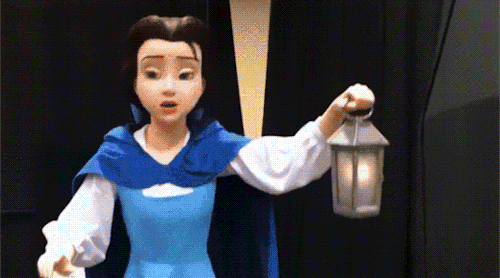
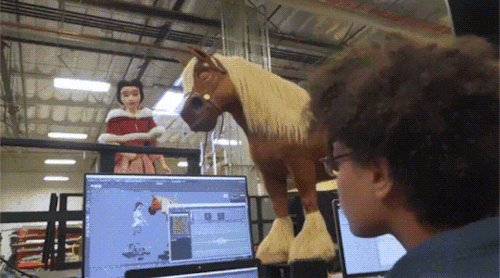
it took me like 3 minutes to process the fact that this wasnt cgi
-
 the-only-lack-of-infinity liked this · 1 month ago
the-only-lack-of-infinity liked this · 1 month ago -
 the-only-lack-of-infinity reblogged this · 1 month ago
the-only-lack-of-infinity reblogged this · 1 month ago -
 l-oolll liked this · 1 year ago
l-oolll liked this · 1 year ago -
 adastra-moonchild liked this · 5 years ago
adastra-moonchild liked this · 5 years ago -
 quiltedmeadows liked this · 5 years ago
quiltedmeadows liked this · 5 years ago -
 a-faraway-dream reblogged this · 6 years ago
a-faraway-dream reblogged this · 6 years ago -
 thegreenkeeper reblogged this · 6 years ago
thegreenkeeper reblogged this · 6 years ago -
 thegreenkeeper liked this · 6 years ago
thegreenkeeper liked this · 6 years ago -
 awolfinitaly liked this · 6 years ago
awolfinitaly liked this · 6 years ago -
 itsblackkattroselove reblogged this · 7 years ago
itsblackkattroselove reblogged this · 7 years ago -
 itsblackkattroselove liked this · 7 years ago
itsblackkattroselove liked this · 7 years ago -
 wavecrusher34-blog liked this · 7 years ago
wavecrusher34-blog liked this · 7 years ago -
 annabellesacres reblogged this · 7 years ago
annabellesacres reblogged this · 7 years ago -
 frothingmagpies liked this · 8 years ago
frothingmagpies liked this · 8 years ago -
 rodashean liked this · 9 years ago
rodashean liked this · 9 years ago -
 rodashean reblogged this · 9 years ago
rodashean reblogged this · 9 years ago -
 skumbae liked this · 9 years ago
skumbae liked this · 9 years ago -
 iswearimnotacynic liked this · 9 years ago
iswearimnotacynic liked this · 9 years ago -
 myownmagic liked this · 9 years ago
myownmagic liked this · 9 years ago -
 colorado-style reblogged this · 9 years ago
colorado-style reblogged this · 9 years ago -
 ariahsheltersketerthings reblogged this · 9 years ago
ariahsheltersketerthings reblogged this · 9 years ago -
 ariahsheltersketerthings liked this · 9 years ago
ariahsheltersketerthings liked this · 9 years ago -
 rollerscmods liked this · 10 years ago
rollerscmods liked this · 10 years ago -
 rollerscmods reblogged this · 10 years ago
rollerscmods reblogged this · 10 years ago -
 shaylacherry liked this · 10 years ago
shaylacherry liked this · 10 years ago -
 fermoy reblogged this · 10 years ago
fermoy reblogged this · 10 years ago -
 dedurp reblogged this · 10 years ago
dedurp reblogged this · 10 years ago -
 dedurp liked this · 10 years ago
dedurp liked this · 10 years ago -
 krunch5150 reblogged this · 10 years ago
krunch5150 reblogged this · 10 years ago -
 krunch5150 liked this · 10 years ago
krunch5150 liked this · 10 years ago -
 colorado-style reblogged this · 10 years ago
colorado-style reblogged this · 10 years ago -
 fermoy liked this · 10 years ago
fermoy liked this · 10 years ago -
 lorelei668 reblogged this · 10 years ago
lorelei668 reblogged this · 10 years ago -
 lorelei668 liked this · 10 years ago
lorelei668 liked this · 10 years ago -
 colorado-style reblogged this · 10 years ago
colorado-style reblogged this · 10 years ago -
 colorado-style reblogged this · 10 years ago
colorado-style reblogged this · 10 years ago -
 colorado-style reblogged this · 10 years ago
colorado-style reblogged this · 10 years ago -
 chicanokat liked this · 10 years ago
chicanokat liked this · 10 years ago -
 nythunnos liked this · 11 years ago
nythunnos liked this · 11 years ago -
 youngfreeradical reblogged this · 11 years ago
youngfreeradical reblogged this · 11 years ago -
 mylittlecobhouse-blog reblogged this · 11 years ago
mylittlecobhouse-blog reblogged this · 11 years ago

-Just Me [In my 30s going on eternity] (A Random Rambling Wordy Nerd and an appreciator of all forms of artistic expression) Being Me- Art, Books, Fantasy, Folklore, Literature, and the Natural World are my Jam.
249 posts